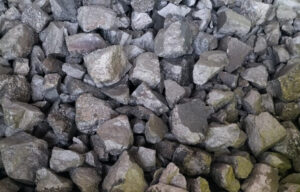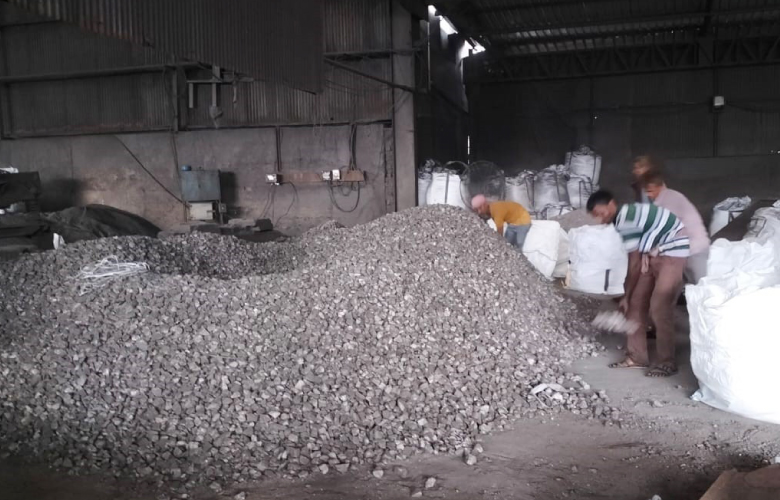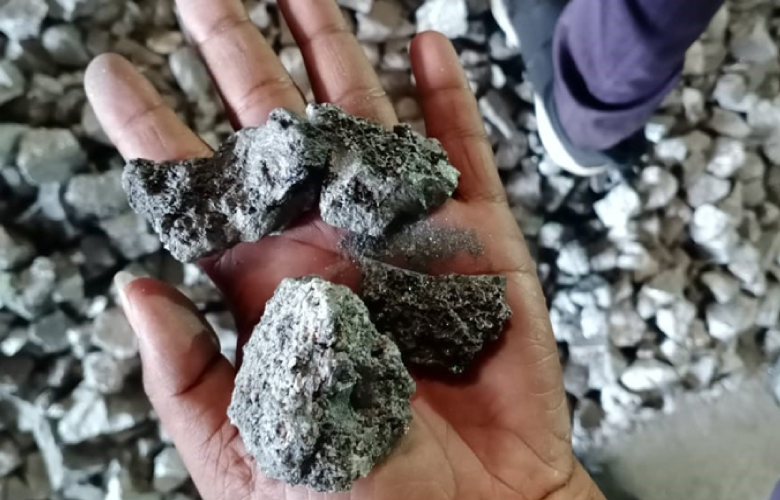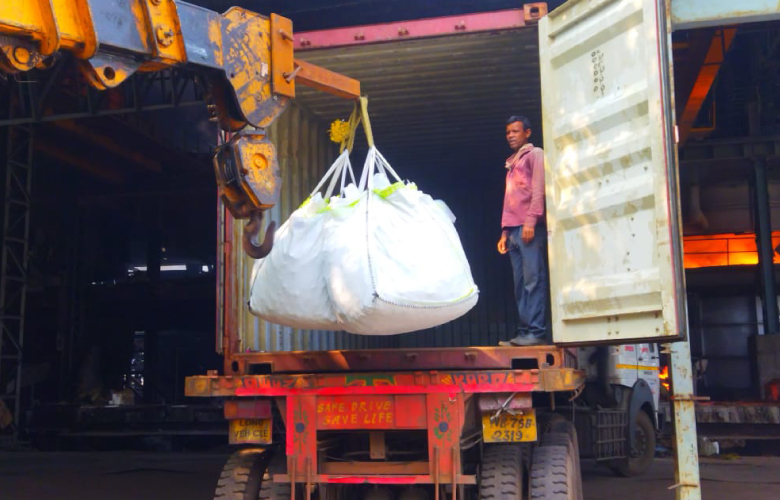Low Carbon Silicomanganese
 Low carbon silicomanganese is an alloy composed of manganese, silicon, and carbon, with a low carbon content typically below 0.1%. It is used primarily as a deoxidizer and desulfurizer in steelmaking, where it helps to remove impurities and improve the quality of the final product.
Low carbon silicomanganese is an alloy composed of manganese, silicon, and carbon, with a low carbon content typically below 0.1%. It is used primarily as a deoxidizer and desulfurizer in steelmaking, where it helps to remove impurities and improve the quality of the final product.
Silicomanganese is produced by smelting a mixture of manganese ore, quartz, and iron ore in a furnace, typically with carbon as the reducing agent. By adjusting the amount of carbon used in the process, the carbon content of the final product can be controlled. Low carbon silicomanganese is produced using less carbon during the smelting process, resulting in a lower carbon content in the final alloy.
Low carbon silicomanganese is typically used in applications where a low carbon content is desired, such as in the production of high-strength low-alloy (HSLA) steels or as a component in welding consumables. It can also be used as a microalloying element in the production of other types of steel, where it helps to improve the strength, toughness, and other mechanical properties of the final product.
Low carbon silicomanganese is produced by a number of countries around the world, but the largest producers and suppliers include:
Brazil
China
India
Kazakhstan
Russia
South Africa
Ukraine
These countries have significant reserves of manganese ore and a well-developed steel industry, which allows them to produce and supply large quantities of low carbon silicomanganese to the global market. However, there are also smaller producers of this product in other countries, including Australia, Gabon, and Ghana. The exact sources of low carbon silicomanganese will depend on the specific needs and preferences of individual buyers, as well as factors such as price, availability, and shipping logistics.
Low carbon silicomanganese is typically available in several different grades, which may vary slightly depending on the manufacturer and the intended application. The most common grades of low carbon silicomanganese include:


- SiMn 60/14: This grade typically contains 60% manganese and 14% silicon, with a maximum carbon content of 0.1%. It is often used as a deoxidizer in steelmaking.
- SiMn 65/16: This grade typically contains 65% manganese and 16% silicon, with a maximum carbon content of 0.1%. It is commonly used in the production of HSLA steels and other high-strength steels.
- SiMn 70/15: This grade typically contains 70% manganese and 15% silicon, with a maximum carbon content of 0.1%. It is often used in the production of stainless steels and other specialty alloys.
- SiMn 75/16: This grade typically contains 75% manganese and 16% silicon, with a maximum carbon content of 0.1%. It is commonly used as a microalloying element in the production of various types of steel.
- SiMn 80/14: This grade typically contains 80% manganese and 14% silicon, with a maximum carbon content of 0.1%. It is often used in the production of high-strength steels and other specialty alloys.
Other grades of low carbon silicomanganese may also be available, depending on the specific requirements of the customer or the application. These grades may vary in their manganese and silicon content, as well as in other properties such as sulfur and phosphorus levels.
The inspection of silicomanganese during export typically involves a number of different tests and analyses to determine its quality and ensure that it meets the specifications and standards set by the customer and the relevant regulatory bodies.
Some of the key tests and inspections that may be performed on silicomanganese during export include:

- Chemical analysis: This involves testing a sample of the silicomanganese for its chemical composition, including its manganese, silicon, carbon, sulfur, phosphorus, and other trace element content. This is typically done using various laboratory techniques such as X-ray fluorescence (XRF) spectroscopy, atomic absorption spectroscopy (AAS), or inductively coupled plasma (ICP) analysis.
- Physical inspection: This involves visually inspecting the silicomanganese for any physical defects, such as cracks, inclusions, or other impurities. This can be done by examining a representative sample of the product or by conducting a more thorough inspection of the entire shipment.
- Particle size analysis: This involves measuring the size distribution of the silicomanganese particles, which can affect its performance in various applications. This is typically done using sieving.
- Packaging and labeling inspection: This involves inspecting the packaging and labeling of the silicomanganese to ensure that it is properly labeled with the correct product information, including its grade, chemical composition, and any other relevant specifications or certifications.
Overall, the inspection process for silicomanganese during export may vary depending on the specific requirements of the customer and the regulations of the importing and exporting countries. However, the goal of the inspection is always to ensure that the product meets the necessary quality standards and is safe for use in various applications.
We offer materials of 56/54% Mn with maximum 0.2% C.
For enquiry, please drop us an email and we will revert to you promptly. Top of Form
